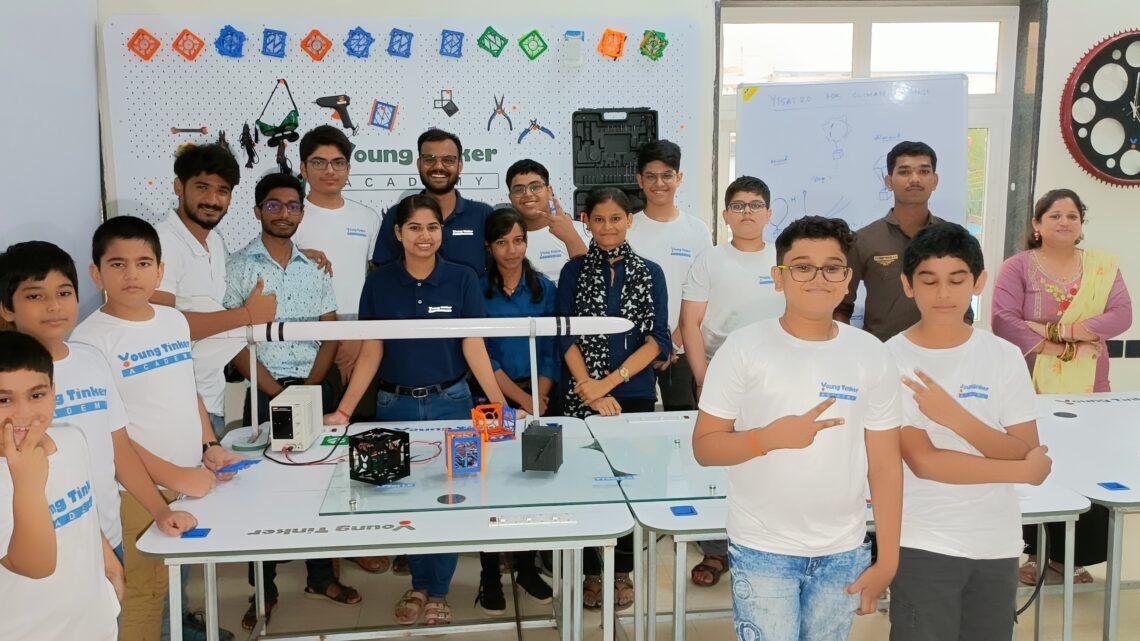Young Tinker Academy’s student team will be launching a CubeSat (cube-sized satellite) named YTSAT 2.0 (Young Tinker Satellite 2.0) in Nayapalli, Bhubaneswar. The size of CubeSat is 12.3cm x 12.3cm x 12.3cm. It has a mass of 1.28 kg (generally less than 2kg). The material used for YTsat 2.0 is “polylactic acid” biodegradable.
This satellite was developed by 10 students to determine the Air Quality index and find a possible solution for climate change. The aim of this launch is to study the amount of pollution caused by industries and vehicles in the atmosphere in today’s world. The students have included various sensors like temperature sensors, humidity sensors, and air quality sensors on their own satellite.
The students have designed the satellite to create awareness about the rising pollution levels in the environment. The satellite is set to launch at Young Tinker Academy.
The YTSAT 2.0 has sensors like
- Air quality sensor (MQ-135)
- Gyroscope (GY-521)
- Altitude sensor (HW-596)
- Temperature/Humidity sensor (DHT-22)
Students have given the power supply so that this sensor can work properly.
The YTSAT 2.0 consists of two circuits “the sender circuit” and “the receiver circuit”. The communication between them is done using Arduino nano and LoRa (long-range distance) module and other electronic equipment.
The working of this satellite can be explained in 4 stages –
- Stage 1 : involves the launching of a satellite with the help of a helium balloon (as helium is light gas).
- Stage 2 : involves the ascent of a satellite. At this stage, as the satellite moves up it will collect the different data such as air quality, temperature, and humidity. This collected data will be sent to the ground station where students can see and use this information.
- Stage 3 : is when the satellite reaches maximum height i.e., 20-25 km. At this height, the helium balloon will burst, and then the satellite will start to come down with the help of a parachute that is fixed in YTSAT 2.0.
- Stage 4 : involves the descent of the satellite. During this time, the satellite again repeats the same task of collecting data and sending it to the ground station.
The advantage of YTSAT2.0 is it can be used for climate and environment monitoring, pollution levels can be detected, etc.
The student’s team consists of : Naitik Bhalla, Shaival Patnaik, Sai Shubham Parida, Rohitansh Kumar Patra, Om, Koustuv Jena, Sourav Jena, Advik Das, Pranav Behera, Debanjan Sahoo
Our mentors are : Mr. Bijan Das, Mr. Anil Pradhan, Ms. Vaishali Sharma
Our volunteers team : Kailash Chandra Barik, Shubham Tayade, Alok Mohanty, Abhipsa Pattnaik, Ayusa Parida, Abhishek Shukla, Shubhrajit Sahoo


